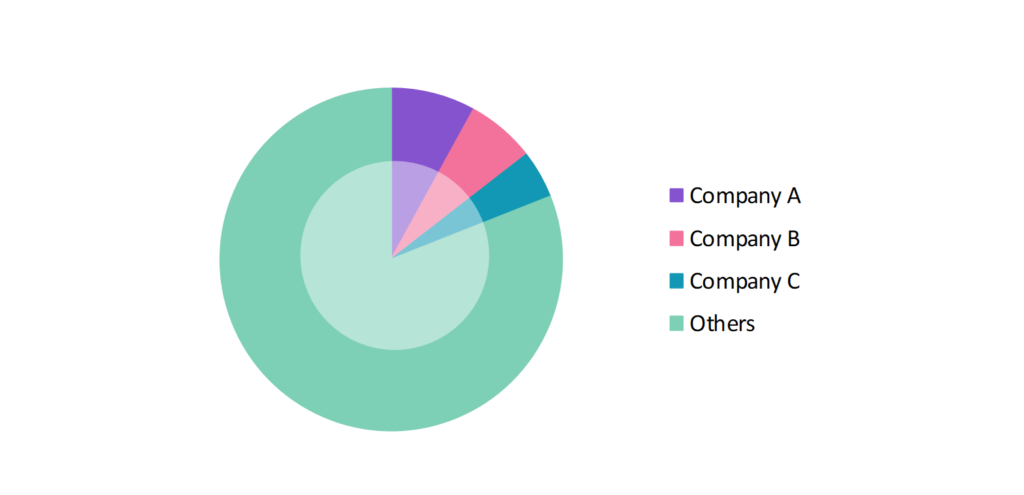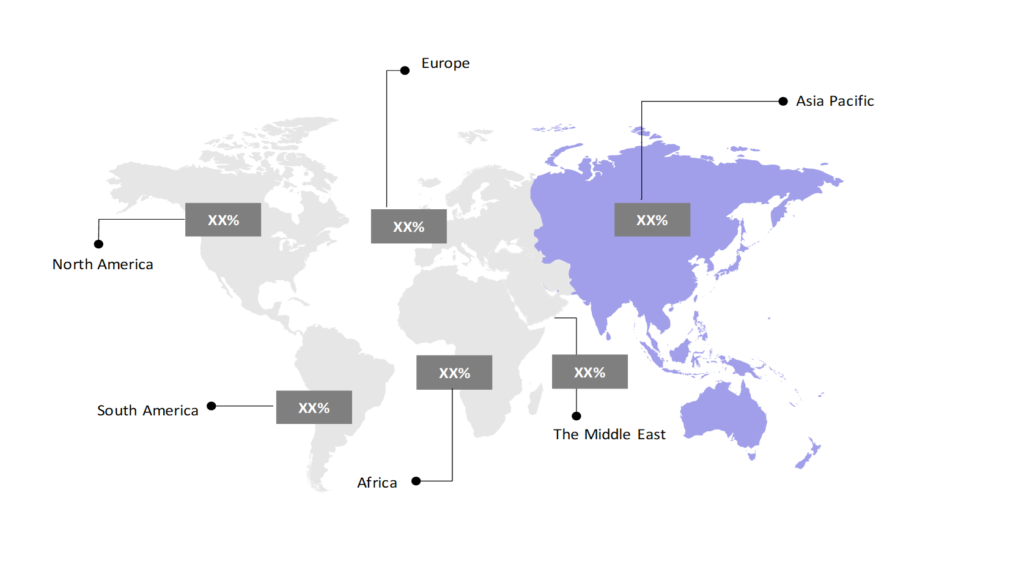Workplace Safety Market Outlook: Size, Share, Trends & Growth Analysis (2024-2029)
The market report presents a thorough analysis segmented by Component (Hardware, Software, Others); by System (Real-Time Location Monitoring, Environmental Health and Safety, Others); by Application (Incident and Emergency Management, Asset Tracking and Management, Others); by End User (Energy and Utilities, Construction and Engineering, Healthcare, Others); by Geography (North America, South America, Asia Pacific, Europe, The Middle East, Africa).
Outlook

- The workplace safety market is estimated to be at USD 19,647.50 Mn in 2024 and is anticipated to reach USD 33,505.02 Mn in 2029.
- The workplace safety market is registering a CAGR of 11.27% during the forecast period of 2024-2029.
- The global workplace safety market is experiencing significant growth, driven by increasing awareness of occupational hazards and stringent regulatory requirements. Innovations in safety technologies, such as AI-based monitoring systems and wearable safety devices, are also contributing to market expansion.
Request a free sample.
Ecosystem

- The global workplace safety industry participants always develop strategies to preserve a competitive advantage.
- There is a strong focus on R&D to drive technological advancements, strategic partnerships and acquisitions, and frequent technological launches.
- Several important entities in the workplace safety market include IBM Corp.; Honeywell International Inc.; Microsoft Corp.; The Bosch Group; Appian Corp.; and others.
Ask for customization.
Findings
| Attributes | Values |
|---|---|
| Historical Period | 2018-2022 |
| Base Year | 2023 |
| Forecast Period | 2024-2029 |
| Market Size (2024) | USD 19,647.50 Mn |
| Market Size (2029) | USD 33,505.02 Mn |
| Growth Rate | 11.27% CAGR from 2024 to 2029 |
| Key Segments | Component (Hardware, Software, Others); System (Real-Time Location Monitoring, Environmental Health and Safety, Others); Application (Incident and Emergency Management, Asset Tracking and Management, Others); End User (Energy and Utilities, Construction and Engineering, Healthcare, Others); Geography (North America, South America, Asia Pacific, Europe, The Middle East, Africa) |
| Key Vendors | IBM Corp.; Honeywell International Inc.; Microsoft Corp.; The Bosch Group; Appian Corp. |
| Key Countries | The US; Canada; Mexico; Brazil; Argentina; China; India; Japan; South Korea; The UK; Germany; Italy; France; Spain; Turkey; UAE; Egypt; South Africa |
| Largest Market | Asia Pacific |
Get a free quote.
Trends
- Wearable Safety Devices: Wearable safety devices, such as smart helmets and vests, are becoming increasingly popular for real-time monitoring of worker health and safety. In February 2024, IBM introduced a new line of smart wearables that track vital signs and environmental conditions, providing instant alerts to workers and supervisors.
- Virtual Reality (VR) Training: VR-based safety training programs are gaining traction because they offer immersive, interactive learning environments that enhance engagement and retention. As industries increasingly prioritize hands-on, realistic simulations for training, the trend for VR solutions is expected to continue to rise, enhanced by their effectiveness in reducing accidents and improving safety compliance.
- Remote Monitoring and Automation: Remote monitoring and automation technologies enhance safety in hazardous environments. For example, in April 2024, Shell implemented a remote monitoring system on its offshore oil rig, using drones and automated sensors to detect safety issues without putting human workers at risk.
Speak to analyst.
Catalysts
- Rising Workplace Accidents: Increasing workplace accidents and injuries drive businesses to adopt comprehensive safety solutions to mitigate risks and enhance employee well-being. This urgency fuels the growth of advanced safety technologies like VR training programs, which offer more effective, real-world scenarios for hazard prevention and response.
- Growing Awareness of Occupational Health: Growing awareness about the importance of occupational health and safety among employers and employees is accelerating the adoption of advanced safety solutions. This heightened awareness drives the demand for innovative training tools, such as VR-based programs, which offer more engaging and effective methods for maintaining a safe work environment and ensuring regulatory compliance.
- Increased Focus on Employee Well-being: Employers increasingly prioritize employee well-being as part of their corporate responsibility initiatives. For example, in April 2024, Google expanded its employee wellness programs to include comprehensive safety training and mental health support, reflecting a broader trend among leading corporations.
Inquire before buying.
Restraints
- Technological Integration Issues: Integrating new safety technologies with existing systems can be problematic. For example, in January 2024, Siemens reported delays in deploying its new safety monitoring system due to compatibility issues with older machinery in several manufacturing plants.
- Regulatory Compliance Complexity: Navigating the complex web of local, national, and international safety regulations poses a significant challenge for multinational corporations, requiring continuous updates and compliance across diverse legal frameworks. This complexity hinders the implementation of standardized safety programs and necessitates sophisticated solutions to ensure uniformity and adherence to varying regulatory requirements.
- High Implementation Costs: Small and medium-sized enterprises face high implementation costs when adopting advanced safety systems, which frequently strain their limited budgets and resources. This financial hurdle restricts their ability to access innovative technologies, like VR-based training programs, which could significantly improve their safety measures and compliance.
Personalize this research.
Hotspot

Explore purchase options.
Table of Contents
| 1. Introduction 1.1. Research Methodology 1.2. Scope of the Study 2. Market Overview / Executive Summary 2.1. Global Workplace Safety Market (2018 – 2022) 2.2. Global Workplace Safety Market (2023 – 2029) 3. Market Segmentation 3.1. Global Workplace Safety Market by Component 3.1.1. Hardware 3.1.2. Software 3.1.3. Others 3.2. Global Workplace Safety Market by System 3.2.1. Real-Time Location Monitoring 3.2.2. Environmental Health and Safety 3.2.3. Others 3.3. Global Workplace Safety Market by Application 3.3.1. Incident and Emergency Management 3.3.2. Asset Tracking and Management 3.3.3. Others 3.4. Global Workplace Safety Market by End User 3.4.1. Energy and Utilities 3.4.2. Construction and Engineering 3.4.3. Healthcare 3.4.4. Others 4. Regional Segmentation 4.1. North America 4.1.1. The US 4.1.2. Canada 4.1.3. Mexico 4.2. South America 4.2.1. Brazil 4.2.2. Argentina 4.2.3. Colombia 4.2.4. Chile 4.2.5. Rest of South America 4.3. Asia Pacific 4.3.1. China 4.3.2. India 4.3.3. Japan 4.3.4. South Korea 4.3.5. Rest of Asia Pacific 4.4. Europe 4.4.1. The UK 4.4.2. Germany 4.4.3. Italy 4.4.4. France 4.4.5. Spain 4.4.6. Rest of Europe 4.5. The Middle East 4.5.1. Turkey 4.5.2. UAE 4.5.3. Saudi Arabia 4.5.4. Rest of the Middle East 4.6. Africa 4.6.1. Egypt 4.6.2. South Africa 4.6.3. Rest of Africa 5. Value Chain Analysis of the Global Workplace Safety Market 6. Porter Five Forces Analysis 6.1. Threats of New Entrants 6.2. Threats of Substitutes 6.3. Bargaining Power of Buyers 6.4. Bargaining Power of Suppliers 6.5. Competition in the Industry 7. Trends, Drivers and Challenges Analysis 7.1. Market Trends 7.1.1. Market Trend 1 7.1.2. Market Trend 2 7.1.3. Market Trend 3 7.2. Market Drivers 7.2.1. Market Driver 1 7.2.2. Market Driver 2 7.2.3. Market Driver 3 7.3. Market Challenges 7.3.1. Market Challenge 1 7.3.2. Market Challenge 2 7.3.3. Market Challenge 3 8. Opportunities Analysis 8.1. Market Opportunity 1 8.2. Market Opportunity 2 8.3. Market Opportunity 3 9. Competitive Landscape 9.1. IBM Corp. 9.2. Honeywell International Inc. 9.3. Microsoft Corp. 9.4. The Bosch Group 9.5. Appian Corp. 9.6. Company 6 9.7. Company 7 9.8. Company 8 9.9. Company 9 9.10. Company 10 |
Know the research methodology.
Workplace Safety Market – FAQs
1. What is the current size of the workplace safety market?
Ans. In 2024, the workplace safety market size is $19,647.50 Mn.
2. Who are the major vendors in the workplace safety market?
Ans. The major vendors in the workplace safety market are IBM Corp.; Honeywell International Inc.; Microsoft Corp.; The Bosch Group; Appian Corp.
3. Which segments are covered under the workplace safety market segments analysis?
Ans. The workplace safety market report offers in-depth insights into Component, System, Application, End User, and Geography.
